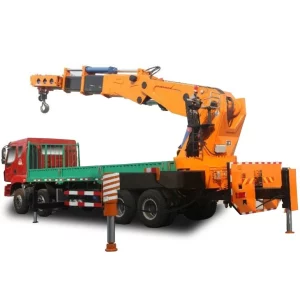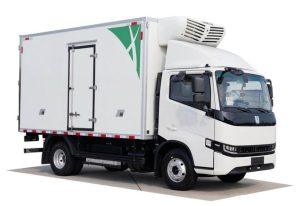Monday to Saturday - 8:00 -17:30
Understanding Truck Vehicle Identification Numbers (VINs): A Comprehensive Guide
Introduction
In the world of vehicles, each automobile has a specific identity, crafted through an essential element known as the Vehicle Identification Number, or VIN. This alphanumeric code is vital for identifying vehicles, especially trucks that play pivotal roles in logistics and transport sectors. As you delve into this comprehensive guide, you will learn about the structure of truck VINs, their significance, how to decode them, and much more. Whether you’re a truck owner, a potential buyer, or simply interested in automotive details, understanding VINs opens doors to greater knowledge about vehicles on the road.
What is a Vehicle Identification Number (VIN)?
A Vehicle Identification Number (VIN) is a unique 17-character code assigned to every motor vehicle, including trucks. Established by the National Highway Traffic Safety Administration (NHTSA), the VIN serves as the vehicle’s fingerprint, ensuring it can be uniquely identified among millions of other vehicles.
History and Purpose of VINs
The use of VINs began in the 1950s, but it was not until 1981 that the 17-character format was standardized. Each character in the VIN holds specific information about the vehicle, including its make, model, year, and where it was manufactured. This information is critical for various stakeholders, including law enforcement, insurance companies, and vehicle owners.
The Structure of a VIN
The VIN is structured into three main sections: World Manufacturer Identifier (WMI), Vehicle Descriptor Section (VDS), and Vehicle Identifier Section (VIS).
- World Manufacturer Identifier (WMI): The first three characters, representing the manufacturer and the country of origin.
- Vehicle Descriptor Section (VDS): Characters four through ninth describe the vehicle’s model, body style, engine type, and various features.
- Vehicle Identifier Section (VIS): The last eight characters provide unique information about the vehicle, including the model year, production number, and plant code.
Decoding Your Truck VIN
Understanding how to decode a truck VIN can provide valuable insights about the vehicle. Each character within the VIN serves a purpose, and knowing how to interpret them can assist in making informed decisions regarding purchases and maintenance.
Example of a Truck VIN
Let’s decode a fictional truck VIN: 1FDXF46F9VEB12345.
| Character Position | Meaning |
|---|---|
| 1FD | World Manufacturer Identifier (Ford) |
| X | Type of vehicle (truck) |
| F | Engine type |
| 46 | Model descriptor (F-450) |
| F | Check digit |
| 9 | Model year (1997) |
| V | Assembly plant (Virginia) |
| EB12345 | Sequential production numbers |
Why is a VIN Important for Truck Owners?
The VIN is not just a random sequence of characters—it’s crucial for several reasons, particularly for truck owners. Here are some reasons why it matters:
1. Registration and Title
Your truck’s VIN is essential for registering the vehicle with your local Department of Motor Vehicles (DMV) and securing a title. Without a VIN, you cannot legally own or operate a truck on public roads.
2. Identifying Ownership
The VIN helps confirm the ownership of the vehicle, which is a critical factor if you’re buying a used truck. Always check the VIN against the title and registration documents to ensure they match.
3. Insurance Purposes
Insurance companies require the VIN to analyze the risk associated with insuring a specific vehicle. The VIN helps determine the vehicle’s safety features, repair history, and market value, which influences premium calculations.
4. Theft Recovery
The VIN plays a vital role in vehicle theft recovery. Law enforcement agencies use VINs to track stolen trucks and identify their owners. A visible VIN makes it easier for authorities to provide the necessary assistance.
How to Locate Your Truck’s VIN
Finding your truck’s VIN is simple, as it is located in several common places:
1. On the Dashboard
Your truck’s VIN can often be found on a metal plate on the driver’s side dashboard. Look through the windshield from outside the vehicle.
2. On the Driver’s Door Jamb
Another common location is on the driver’s side door jamb. Open the door, and you may find a sticker or metal plate that lists the VIN, along with important safety information.
3. Underneath the Hood
Some trucks have their VIN stamped on the frame or engine block. Check the manufacturer’s manual for the specific location.
4. Vehicle Registration or Title
If you cannot physically find the VIN, you can also refer to your truck’s registration documents or title, where the VIN is typically printed.
Common VIN Mistakes to Avoid
There are some common pitfalls and mistakes related to VINs that truck owners should be aware of:
1. Wrong Character Interpretation
Confusing the letter “O” with the number “0” or “I” with the number “1” can lead to incorrect VIN readings. Be sure to double-check each character.
2. Failing to Verify VIN Before Purchase
Many buyers neglect to verify the VIN when purchasing a used truck. Always cross-check the VIN with the vehicle’s title and registration documents.
3. Not Keeping Records
Owners should keep logs of any relevant information associated with their VIN, including registration documents and insurance papers, for easy reference.
Using VIN to Check Vehicle History
A VIN can be used to access valuable vehicle history reports. These reports, available through various services, can provide information like:
1. Accident History
You can determine if your truck has been in any reported accidents, which could impact its safety and value.
2. Title History
Vehicle history reports reveal if the truck has a clean title or if it has been salvaged or rebuilt.
3. Service Records
Some reports also detail service records, highlighting maintenance and repairs performed on the truck.
4. Ownership Changes
Knowing how many previous owners a truck has had can help you assess its condition and reliability.
VIN and Truck Resale Value
The VIN significantly impacts the truck’s resale value. Here’s how:
1. Documentation Verification
A clean VIN history assures potential buyers that the truck is not stolen or involved in major accidents.
2. Performance Insights
VIN-dedicated services provide insights into the truck’s maintenance history, affecting its perceived performance and reliability.
3. Demand and Market Trends
Certain truck models with favorable VIN histories often see better resale value in the market. Keeping your records up-to-date can help maximize potential returns.
Common Questions About Truck VINs
1. Can I change my truck VIN?
No, the VIN is a legally mandated vehicle identifier that should remain unchanged. Tampering with a VIN can lead to serious legal consequences.
2. Where can I get a VIN verification?
VIN verification can typically be performed through the DMV, law enforcement, or authorized inspection stations which can confirm if the VIN matches vehicle records.
3. What should I do if my VIN is missing?
If your VIN is not visible on your truck or documents, consult your manufacturer or a DMV office for assistance in identifying and recording the correct VIN.
4. How can I find out if a truck is stolen using its VIN?
You can check the VIN through national databases such as the National Insurance Crime Bureau (NICB), which offers free checks for stolen vehicles.
5. Are all truck VINs the same length?
Yes, all truck VINs are standardized to 17 characters, regardless of the manufacturer or model year.
6. What if my truck has a bad VIN?
A bad VIN usually means it has been altered or does not match vehicle records. Consult legal advice and verify through your local DMV.









